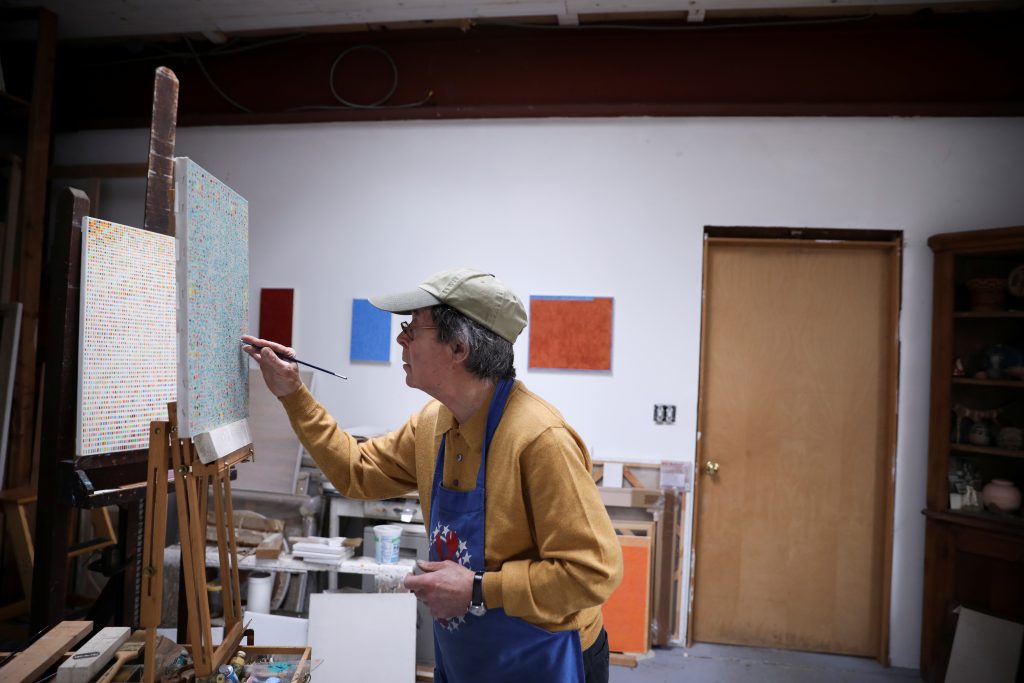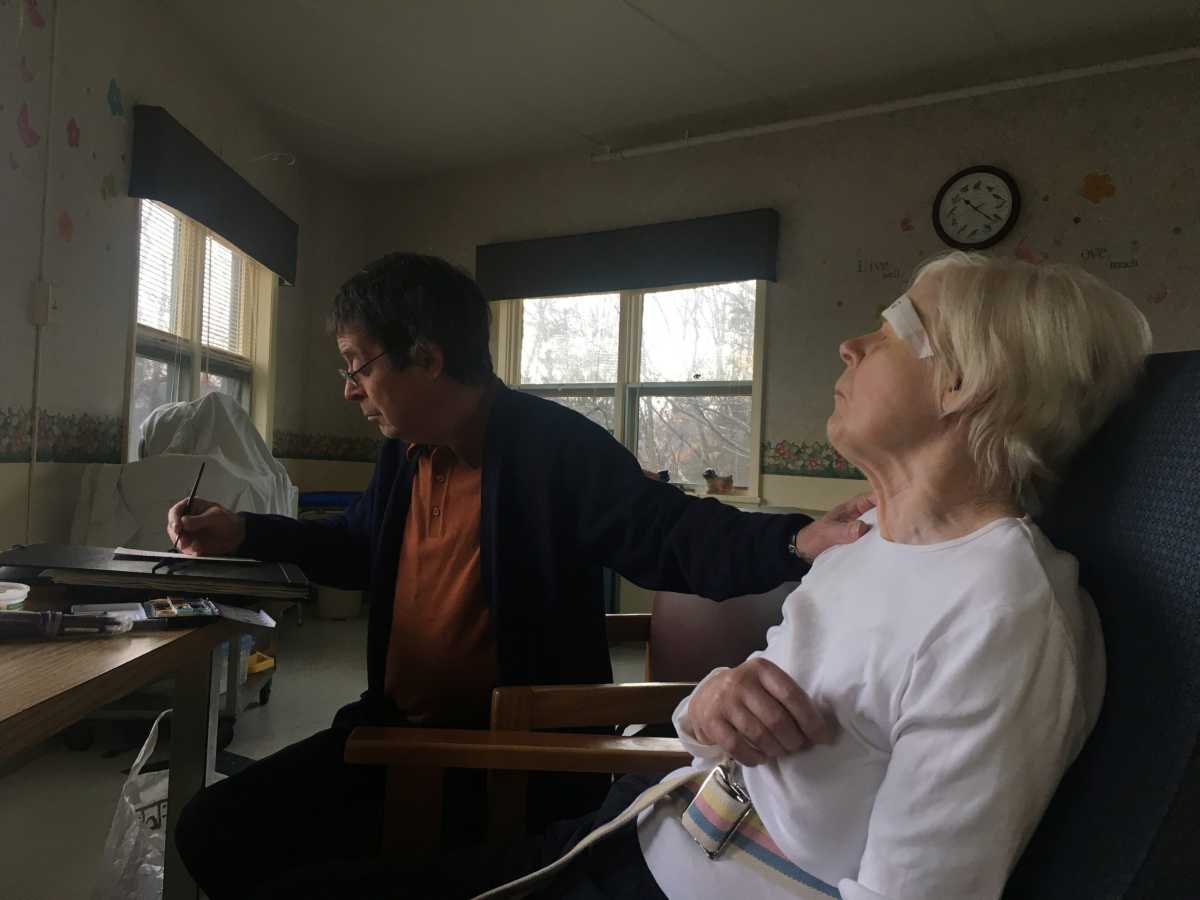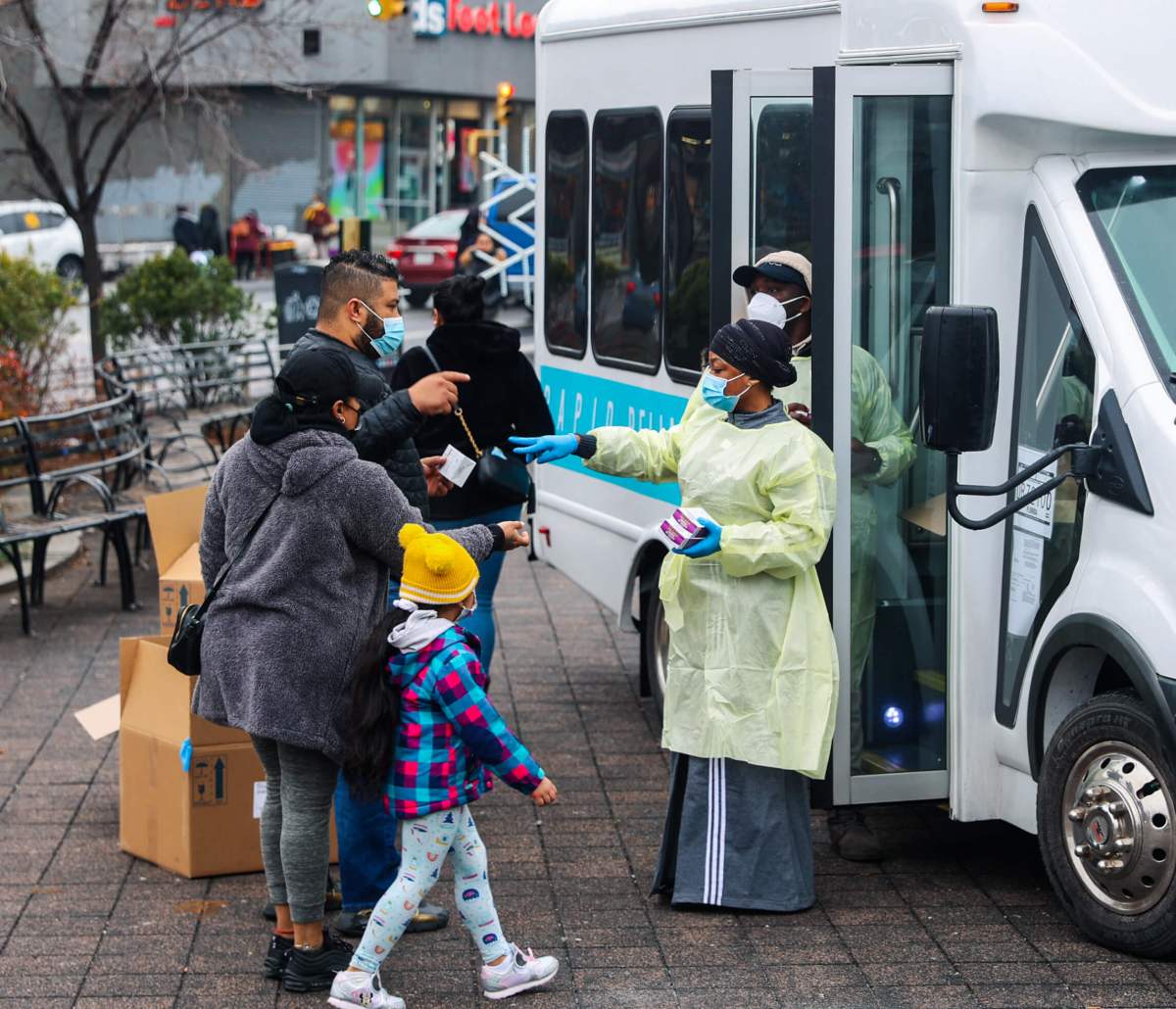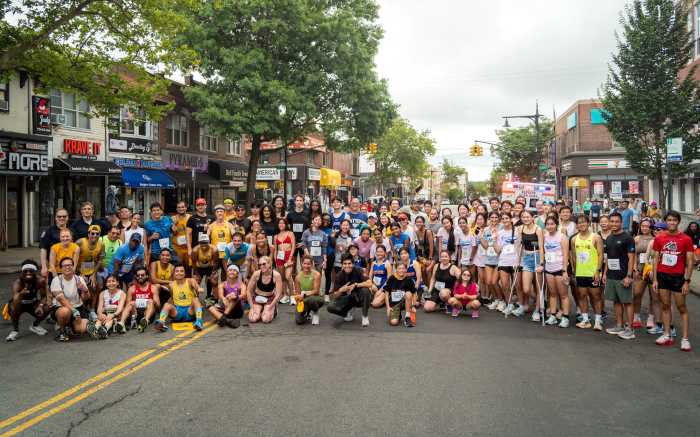BY JOSHUA SCHNEYER
This is a love story. It began 50 years ago over an apple strudel in Paris, but Howard Smith says he has no time for romantic notions about the past. Right now he’s worried about how the story will end.
Howard, an abstract artist, is a man who spends much of his life focusing on small details and routines. His monochrome-like palettes often consist of thousands of repetitive brush strokes, and critics have seen his work as a meticulous attempt to control chaos. Today, Howard knows exactly how far he is from his wife, Lois: 23.7 miles. And he knows exactly how long it has been since he’s seen her: 31 days.
Lois Kittson has late-stage Alzheimer’s disease. Six days a week for the past five years, Howard has made the 40-minute drive to visit Lois at the New Paltz Center nursing home in the Hudson River Valley north of New York City.
They’ve been separated since New York became the epicenter of the coronavirus epidemic in America. On March 11, the nursing home suspended all visitation to protect the residents. On March 20, Governor Andrew Cuomo ordered people statewide to shelter in place.
Howard, 76, understands the need to flatten the curve, but he feels like Lois’ life may depend on his visits. He wants to know how long the pandemic will keep him from his wife, and he worries about everyone else who is enduring similar separations. For thousands of family members locked out of nursing homes worldwide – some of them unable to obtain regular updates from staff inside – the fate of residents can seem suspended between life and death.
“It’s a complete banishment,” said Howard, whose grandmother died in the Spanish flu epidemic of 1918 shortly after giving birth to his mother. That haunts him, particularly now. “I don’t know if I’ll see Lois again.”
Lois, 77, can no longer speak and rarely opens her eyes. She can’t remember the moments that make up half a century of her life with Howard.
Howard remembers them. He talks about the moment they met at a Paris art gallery in January 1970 as if 50 minutes had passed, not 50 years. He remembers how their friendship turned into something more the night they baked an apple strudel at his place in the 13th arrondissement. Concocting and stretching the dough took hours. By the time it came out of the oven, the Paris Metro was closed. Lois spent the night. Then she moved in.
He remembers how Lois, an accomplished artisan herself, always pledged to work straight jobs so that Howard could focus on his artwork. She’s been a cook, a substitute schoolteacher, a drug and alcohol counselor, a nurse’s aide, a sculpture patina expert. “She was a real 1970s feminist,” said Howard, who would gain renown as a member of New York’s Radical Painting Group. “She told me, ‘You make the paintings, I’ll make the money.'”
He remembers the day that Lois, who’d grown up in rural northern British Columbia, came home from work at the Metropolitan Museum of Art in Manhattan and told Howard that she wanted to grow potatoes. So they moved upstate, to a dilapidated pogo-stick factory.
And he remembers how her memory started to fade: slowly at first, until one day when she asked him, “Who are you?” as he helped her in the bathroom.
Occasionally during our long phone calls and emails, Howard would get testy about the reminiscences. “Josh, I wish we could forget this Paris crap,” he said at one point. “Let’s talk about now, how we will make it through this.”
But then he’d launch into another memory of Lois.
So this is a love story, even if Howard insists he’s focused on more practical matters. Because sometimes a love story is unavoidable.
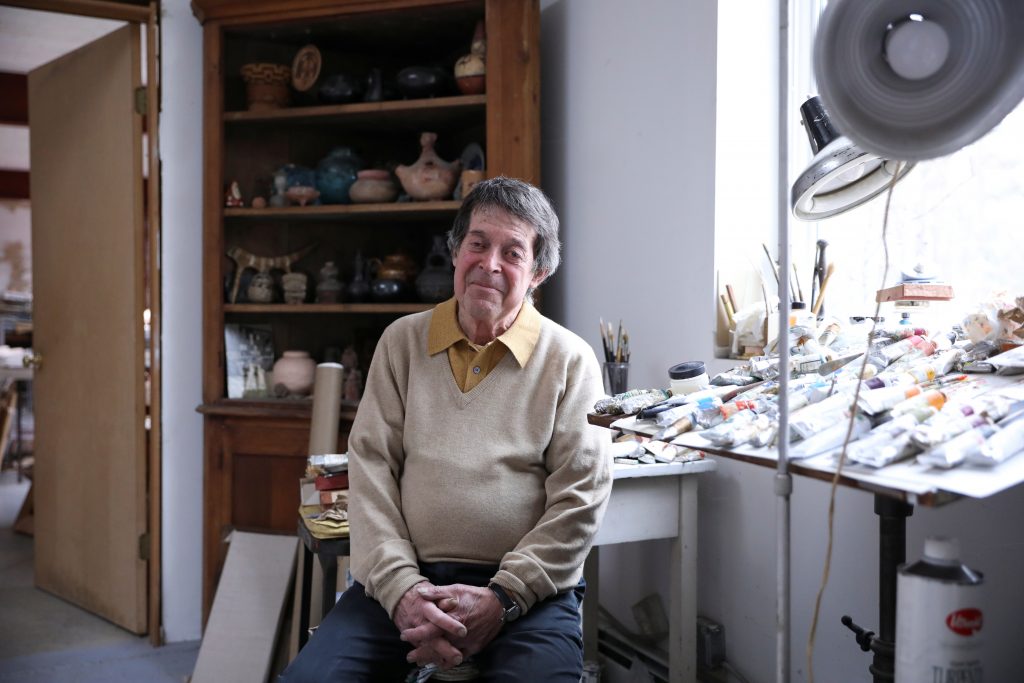
LOVED ONES HIDDEN FROM VIEW
For many of us, perhaps our greatest anxiety during this crisis is that something will happen to our elderly loved ones – whether they are infected with the virus or not – and we will be powerless to get to them with communities and medical facilities in lockdown. And for many, it goes even deeper than that, to the fear of dying alone, or not being able to say goodbye to those who will.
In a White House briefing last Tuesday, the doctors leading the Trump administration’s pandemic response estimated that, in a worst-case scenario, the national death toll could reach as high as 240,000 people; more recent models have suggested it could be far lower. By Thursday, the death toll in New York State had risen to more than 7,000.
The U.S. epidemic began with heart-rending scenes at a nursing home in Kirkland, Washington. At least three dozen residents died in isolation from their relatives as the virus spread like brushfire. Family members could only peer in through the windows. In upstate New York, Lois’ room has no windows facing outside.
Across the United States, nursing homes – some 15,000 of them, with around 1.5 million residents – are in quarantine. Banning visitors is meant to keep the virus out, but staff members still come and go. The same shortages of protective gear putting hospital workers at risk affects nursing home staff. Many have been calling in sick themselves.
Nursing homes, like cruise ships, have emerged as brutally efficient incubators for the virus, which is especially deadly for the elderly. As of April 9, there have been more than 4,000 confirmed cases of the novel coronavirus spread among 312 of New York State’s 613 nursing homes, and 1,231 virus-related deaths, state health data showed.
The virus has also ravaged elder-care facilities across Europe. In Italy, Reuters reported that official death tolls have often excluded the many nursing home patients who are dying.
Howard is unaware of any COVID-19 cases at Lois’ nursing home; the home’s administrator confirmed this Monday and wasn’t immediately available for comment later in the week.
Howard is preparing mentally for bad news, though. “None of us knows how this is going to turn out,” he said. “I’m far more concerned for society than for myself or Lois.”
The virus is hardly the only concern for residents at nursing homes. Many of the facilities are short-staffed, and residents rely on the routines and hands-on care that only family visits offer. A blanket visitation ban would be cruel and inhumane if it stretches on for months, Howard says.
At home, Howard paints. But his life, so bound up in the routine of caring for Lois, has become unmoored.
“The days don’t mean anything to me right now,” he said. “My only cues at home come from the cat that needs to be fed.”
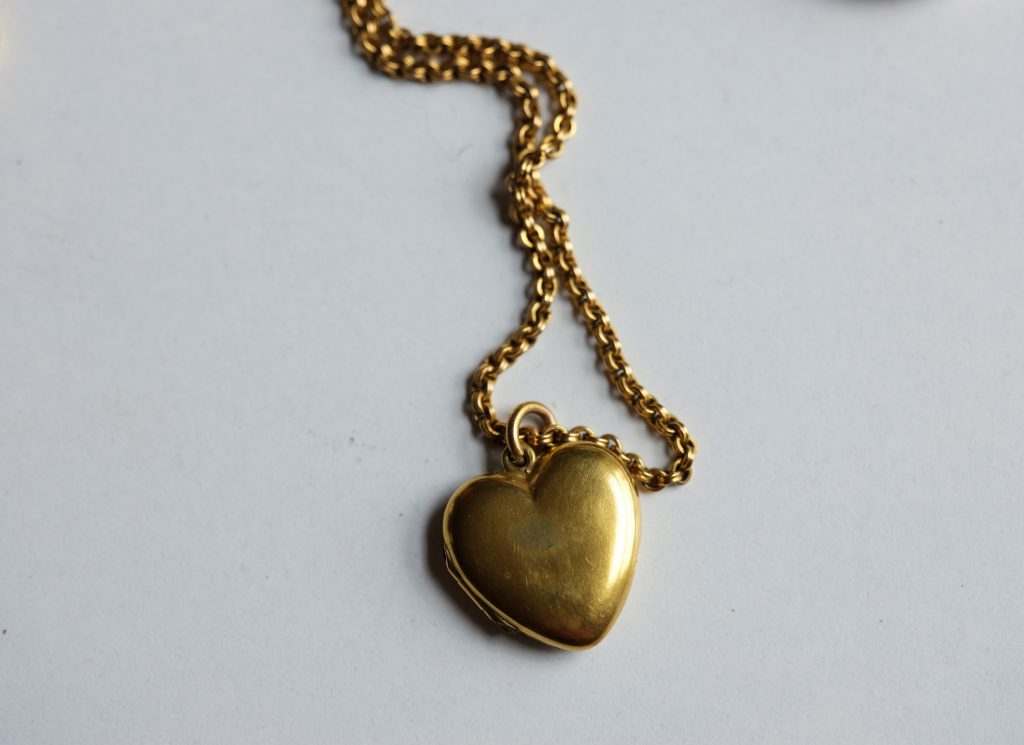
REMEMBERING A LIFE TOGETHER
During normal times, Howard arrives at Lois’ nursing home just after the residents have had breakfast. He’s disciplined about the timing. Lois is freshest in the morning.
Howard plays Lois classical music, reads to her and sometimes holds her hand.
“It’s a way we still have of communicating,” he said.
He helps her with range-of-motion exercises and, weather permitting, he wheels her outside for fresh air. He cleans her teeth and bathes her eyelids to reduce inflammation.
During each of Howard’s last three visits, Lois opened her eyes briefly and smiled at him.
“There’s still that spark of recognition,” he said. “It’s sporadic, and unusual for someone whose disease is so advanced.”
Corresponding with a reporter seemed to bring Howard some solace during his isolation. Our phone calls, some of them hours-long, began to remind me of the Arabian Nights, as if sharing these tales of his life with Lois might offer some reprieve from the present threat.
Alone at home, he went rummaging through photographs, decades-old journal entries. “This has conjured up all sorts of memories,” he said.
Like the first time he saw her, at the Ileana Sonnabend gallery, the one famous for helping to bring American Pop Art to Europe. Lois was a pretty 27-year-old Canadian art historian who worked there while also studying classical guitar and taking a cooking course at L’Institut Cordon Bleu.
He watched as she switched confidently between French and English while chatting up the gallery’s sophisticated clientele.
“Lois seduces everyone with her smile,” Howard said. “Even the caregiver staff at her nursing home. She’s got a fan club there.”
Years after they’d returned from Paris and were living in an artists’ loft in downtown Manhattan, the couple found themselves thinking of children, and Lois had a miscarriage. They began looking at property upstate, including a former pogo-stick factory on an acre plot in a town called Walker Valley. The roof was falling apart, and many of the windows had been shot out; someone apparently liked to use them for target practice. The original building had a long cinder-block addition, hastily erected during a commercial boom for pogo sticks.
“I really think, unfortunately, that this is it,” Lois told Howard, recognizing the backbreaking project that lay ahead to convert the factory into a home and art studio.
They bought it for $28,500 and set to work, moving in permanently a few years later. They were both pushing 50. All the space they had upstate reminded them of a void that remained in their lives.
In 1994, they adopted their daughter, Laurel, at age 1 from China. Lois threw herself into caring for the child.
In a journal entry scribbled in neat cursive on Mother’s Day, 1998, Lois is effusive: “We had a really special beginning this AM that must be noted on the day!” She recounts how Laurel, age 4, brought her breakfast in bed, donuts with chocolate icing and hot coffee.
One reason for keeping the journal, Lois wrote, was for her daughter to read it someday. “It’s very important to record what I can of Laurel’s history, to give her a past because she has no connection to a Chinese family which could tie her down as it were to specific time, place and individuals – no family stories, diseases, disasters, etc.”
Lois also had a business making fine gold jewelry in their studio. By the early 2000s, however, there were little signs of what lay ahead. She had a nocturnal seizure. She was becoming forgetful.
In 2008, Lois was diagnosed with epilepsy. In early 2010, Alzheimer’s.
“Everything changed,” Howard said. “But I just made adjustments in my work life and my painting to be with her, and care for her.”
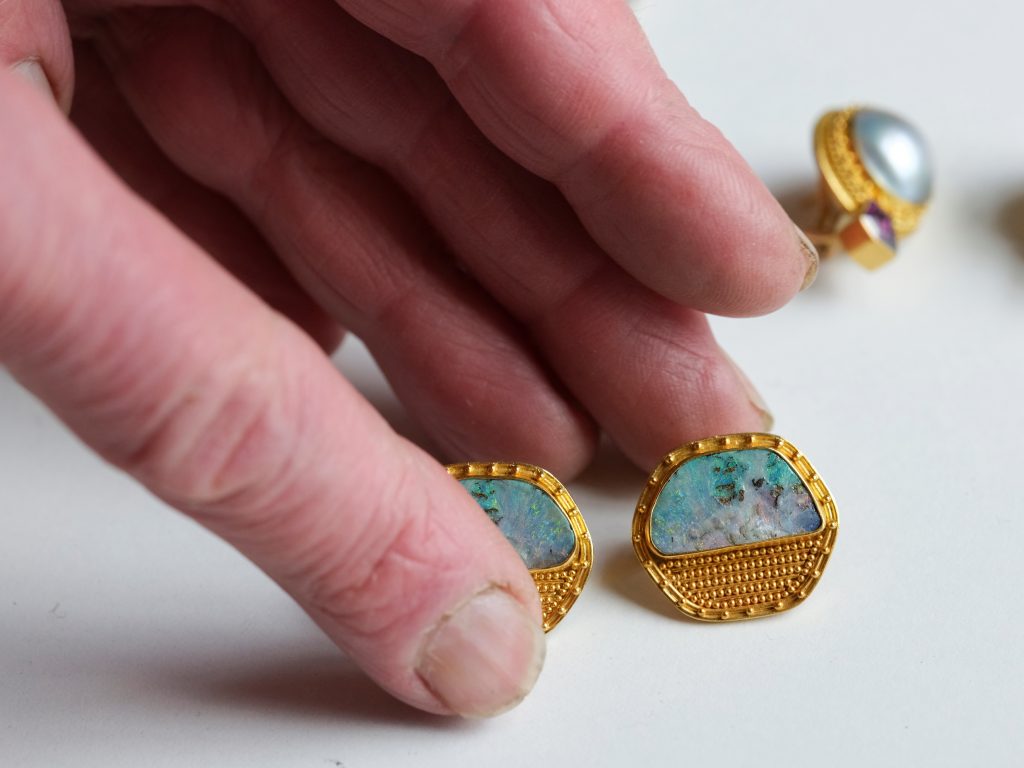
A DAUGHTER WORRIES ABOUT HER FATHER
As hundreds of millions of Americans quarantine themselves, separated family members worry about each other in a kind of infinite loop. Just as Howard can’t see his wife, their daughter, Laurel, now 27, can’t see Howard. Both are thinking about how this affects families everywhere. Isolation is required in the face of the virus, but for every family it creates a crisis all its own.
“I don’t think anybody’s ever going to forget this time,” Howard said.
Laurel, who works in marketing in Manhattan, has hardly been out of her own apartment in East Harlem for weeks. She works from home to a morbid soundtrack, the howl of ambulances at all hours.
“I think a lot about my dad,” she said. “He is bound by routines, and caring for my mom is at the center of all that.”
For years after Lois’ Alzheimer’s diagnosis, Howard had tended to her at home. The bathing, feeding and toileting became more difficult as she deteriorated. Before she moved into the nursing home in 2015, Howard took her for one last time to Paris. Pictures of the trip show Lois out at restaurants and holding empty wine glasses.
“By that time, she’d forget that she’d already had a glass or two,” Howard said.
Howard has been dogged about seeking news of his wife, and he has fared better than most.
In late March, he received an encouraging email from a doctor at the New Paltz Center. “I wanted to tell you that I saw Lois today and she was doing well. She has finished breakfast and was sitting up in her wheelchair,” read one passage.
There have been other unsettling developments since. He learned that Lois, who has trouble swallowing, had vomited up three of her recent meals. Then he found out from local press reports that a retirement home nearby had a fatal case of the virus within, and two others in the area had reported their first infections.
He also got word from museums and galleries in Germany and Switzerland that exhibitions of his work were being shuttered. Museums are closed worldwide. It’s too dangerous for people to view art together.
“I’m not dwelling on any of these things,” Howard said. “I want us to control this damn virus.”
After she moved to the nursing home, Lois entered a stage of decline. At the time, the nursing staff told Howard they didn’t expect her to live long. To his surprise, with his frequent visits, Lois has been able to rally back from a few brushes with death.
“I don’t think anyone realized how resilient she is,” he said.
There is at least one exception that some nursing homes are making to allow visitors. If a resident is dying, a family member can come one last time. But Howard says that kind of visit is of no interest to him. He visits Lois to keep her alive.
